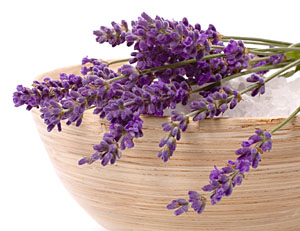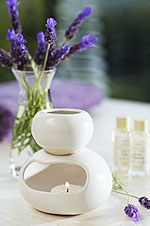Lavender Oil
The Herbal Cure – All Known as Lavender Oil
[ad] Empty ad slot (#1)!
The oil of the lavender plant is an essential oil, giving it many uses. It is made from the flower spikes of various lavender plants by the method of distillation (See: Production). Similar to many other essential oils, it is not a pure compound, but instead naturally mixed with various types of phytochemicals. One of the most well known lavender oils is the Kashmir Lavender oil, made from the lavender plants in the Himalayas.
History of Lavender Oil
Lavender has been in use for over 2,000 years. It is said that the Egyptians used the oil first, as a fragrance and in mummification. The Arabians and Phoenicians also used lavender oil as perfume. The name for lavender in ancient Greece was “spikenard” and was used to treat everything imaginable.
During the times of the Romans, lavender was a highly sought after substance. The flowers themselves were worth more than a farmer could make in a month. Romans used the petals to scent their baths, and this is the reason lavender is named so; the Latin lavare mean “to wash.” This was not the only thing that Romans used lavender for though. They put it in their blends for smoking, as a perfume as the Egyptians did, used it as an insect repellent, and used it for flavoring food and drink.
In the Medieval times, lavender was used in homes to deodorize and disinfect. It was believed that lavender warded against illness, so it was grown in many gardens. When the Great Plague of London hit, lavender was being used everywhere as a means of fighting off the disease. People carried satchels, gloves makes used lavender oil to scent their leathers, and looters who ransacked the homes of victims of the Plague washed in a concoction containing lavender oil to cleanse away any remnants of the Plague they might have caught.
The Quakers used lavender as well, and this is who the use of lavender and lavender oil was introduced to the United States and Canada. They produced their own herbs, crafted medicines, and sold them to the neighbors outside of their sect. As the Quakers were a celibate sect, they more than likely never looked into the romantic and sensual effects of lavender oil. However, it is rumored that Cleopatra used lavender oil to beguile her men, such as Julius Caesar and Mark Antony.
Production of Lavender Essential Oil
There are three different ways that lavender oil, and any other essential oil, is produced. The oldest is by using steam distillation. The plants are put into a steam chamber, the heat breaks down the plant, and it is taken away to another chamber to cool. Here, the oil and water portions are separated, and the oil is extracted.
A somewhat newer way being used to produce lavender oil is by carbon dioxide extraction. The equipment used in this process is quite expensive, and therefore not being used everywhere, however there are benefits to producing the lavender oil this way. A high amount of lavender oil can be extracted, carbon dioxide extraction is cool than the steam method, and therefore is more gentle to the plants, and the aromas produces are extraordinary.
The last method of producing lavender oil is by absolutes. An absolute is an oil that is used as a solvent, and is used to extract oil from particularly delicate things, such as the petals of roses and jasmine. This method is mainly used for perfumes, not for therapeutic oil.
Lavender Oil Types
 While there are over 39 different types of lavender, only four of them can be used to make lavender oil. French lavender, spike lavender, lavandin, and true lavender all have a unique use.
While there are over 39 different types of lavender, only four of them can be used to make lavender oil. French lavender, spike lavender, lavandin, and true lavender all have a unique use.
French lavender oil was what the Romans used to perfume their baths. Before the 18th century, French lavender oil was used for medicinal reasons on Europe. It is recommended to mix French lavender oil with another type when using it.
Spike lavender is used for room fragrances, deodorants, soaps, insect repellant, and disinfectants. Spike lavender oil is more powerful than True lavender oil, so only a few drops are needed.
Lavandin oil is extracted from the lavandin plant, a cross breed of true lavender and spike lavender. It is often called Dutch lavender oil. It smells similar to menthol and is used for colds and coughs, and as a muscle relaxant. While it can be used in a pinch, it is not recommended to be used as a substitute for true lavender oil.
Finally, there is true lavender. It provides a myriad of aromatherapy uses, such as relief from migraines, anxiety, insomnia, and burns. The fragrance of true lavender oil is extremely floral, with sweet and spicy tones.
Lavender Oil Health Benefits
Lavender oil possesses many health benefits including:
- The Nervous System: Lavender has a calming effect, so it excels at helping treat stress, anxiety, depression, and migraine headaches.
- Sleep: Lavender oil can held induce sleep, so many people with insomnia find use of it.
- Pain Relief: Using lavender oil as a massage oil can prove to remedy the pains of muscle tension, arthritis, sprains, and general muscular aches.
- Urine Flow: Lavender helps produce urine. It restores hormone balance and reduces inflammation of the bladder, and sooths cramps caused by urinary disorders.
- Respiratory Disorders: Lavender oil is used much akin to the way a vapor rub is used when treating colds, coughs, the flu, asthma, congestion, bronchitis, laryngitis, and tonsillitis.
- Hair and Skin Care: Lavender oil can be useful in getting rid of lice and nits. For the skin, lavender is used as an antifungal and antiseptic agent (as well as oil of oregano, tea tree oil and eucalyptus oil). Lavender oil can be used to treat various skin conditions such as acne, eczema, and other inflammations. Since it aids in forming scar tissue, lavender oil can also be used on wounds, cuts, burns, and sunburns.
- Digestion: Lavender oil increases mobility of the intestines. Lavender oil also quicken the production of gastric juices and bile. This can help treat indigestion, heartburn, diarrhea, colic, vomiting, and general stomach pains.
- Immunity: Regular use of lavender oil, like Vitamin C, can help build a resistance to diseases.
[ad] Empty ad slot (#1)!
Uses of Lavender Oil
Lavender oil has many uses, most of them being medicinal. Lavender oil can cool burns and stings. It also stimulates blood flow to the area is it applied to, which can aid in healing. Rubbing lavender oil on the forehead or temples can ease a headache and even a migraine in the early stages. Used as a massage oil, lavender oil can relieve muscle pains, arthritis, and tension headaches stemming from the shoulders and neck. A few drops in an aroma diffuser can calm and diminish anxiety. Lavender oil is even said to help relieve insomnia.
Lavender oil has other uses though. Used as a hair rinse or a perfume, it can be used as an insect repellent. Lavender oil (or the petals) can be used in cooking, particularly French cuisine.
Culinary Values of Lavender
French dishes are the main use of lavender and lavender oil. Lavender oil is very functional in desserts, such as breads, jellies, scones, and cakes. It goes along quite well with chocolate. It can also be used in savory dishes, such as lamb.
History of Lavender Oil | Production of Lavender Essential Oil | Lavender Oil Types | Lavender Oil Health Benefits | Uses of Lavender Oil | Culinary Values of Lavender

It?s really a great and useful piece of information about lavender oil. I?m glad that you simply shared this useful information with us. Please stay us informed like this. Thank you for sharing.
Dear Sirs,
We would like to inform you that we are in position to offer a lavender oil of Bulgarian origin.Kindly ask you to confirm an interest in order to send you our detailed offer.
Waiting to hear from you
Best regards
Anabel Ltd
Anna Yanatchkova
I would like to learn more about lavender oil in the different ways medical and a nice bath oil soak for relaxation.
Thanks
Linda Mims